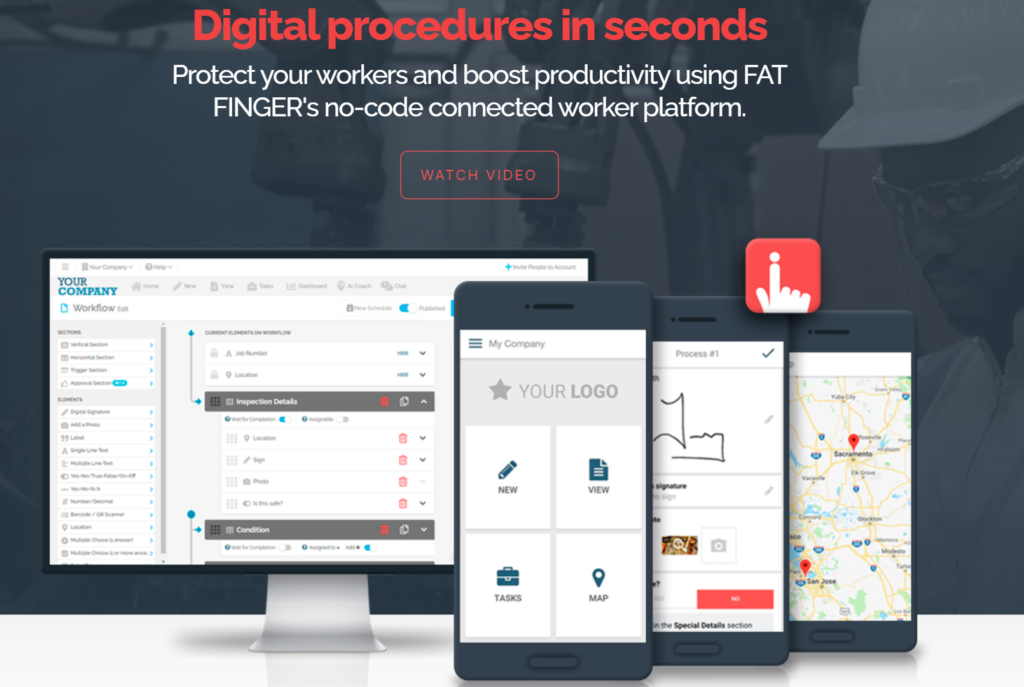In the world of asset management and quality control, inspections play a crucial role in ensuring operational efficiency and safety. Companies often face the dilemma of choosing between external and internal inspections. Each approach has its own set of advantages and disadvantages.
This article delves into the pros and cons of both methods, providing valuable insights to help you make an informed decision. If you’re looking for a streamlined solution, consider requesting a demo of FAT FINGER’s digital workflows.
Understanding External Inspections
External inspections involve hiring third-party experts to evaluate your assets, processes, or systems. These inspectors are usually certified professionals with specialized knowledge in specific areas.
Pros of External Inspections
- Unbiased Perspective: External inspectors provide an impartial view, free from internal biases.
- Expertise: They bring specialized knowledge and experience, often exceeding that of internal staff.
- Compliance: External inspections are often required for regulatory compliance, ensuring adherence to industry standards.
- Resource Allocation: Outsourcing inspections allows internal teams to focus on core activities.
Cons of External Inspections
- Cost: Hiring external inspectors can be expensive, especially for small businesses.
- Scheduling: Coordinating with third-party inspectors can lead to delays.
- Limited Control: Companies have less control over the inspection process and outcomes.
Understanding Internal Inspections

Internal inspections are conducted by in-house staff who are familiar with the company’s operations and assets. These inspections are often part of routine maintenance and quality control processes.
Pros of Internal Inspections
- Cost-Effective: Internal inspections are generally less expensive than hiring external experts.
- Flexibility: Internal teams can schedule inspections at their convenience, reducing downtime.
- Control: Companies have full control over the inspection process and can make immediate adjustments.
- Familiarity: Internal inspectors have a deep understanding of the company’s operations and assets.
Cons of Internal Inspections
- Bias: Internal inspectors may overlook issues due to familiarity or internal pressures.
- Limited Expertise: In-house staff may lack the specialized knowledge required for certain inspections.
- Resource Allocation: Internal inspections can divert resources from other critical tasks.
Case Studies: Real-World Examples
To better understand the impact of external and internal inspections, let’s look at some real-world examples.
Case Study 1: External Inspection in the Oil and Gas Industry
An oil and gas company hired an external inspection firm to evaluate its offshore drilling rigs. The external inspectors identified several safety hazards that the internal team had overlooked. The company implemented the recommended changes, resulting in a 20% reduction in safety incidents over the next year.
Case Study 2: Internal Inspection in Manufacturing
A manufacturing company relied on its internal quality control team to conduct routine inspections. While this approach saved costs, it led to a significant oversight. A critical defect in one of the products went unnoticed, resulting in a costly recall. The company later decided to incorporate periodic external inspections to complement its internal efforts.
Statistics: The Impact of Inspections
Statistics provide a quantitative perspective on the effectiveness of external and internal inspections.
- External Inspections: According to a study by the American Society for Quality, companies that use external inspections report a 30% higher compliance rate with industry standards.
- Internal Inspections: A survey by the National Association of Manufacturers found that 60% of companies rely solely on internal inspections, but 40% of these companies reported missing critical issues.
The Role of Digital Workflows in Inspections

Whether you choose external or internal inspections, digital workflows can significantly enhance the process. FAT FINGER offers a robust platform for managing inspections, ensuring accuracy and efficiency.
How FAT FINGER Enhances External Inspections
- Streamlined Coordination: FAT FINGER’s scheduling features make it easy to coordinate with external inspectors, reducing delays.
- Data Integration: The platform integrates inspection data, providing a comprehensive view of compliance and performance.
- Real-Time Reporting: External inspectors can input data in real-time, allowing for immediate action on critical issues.
How FAT FINGER Enhances Internal Inspections
- Standardized Processes: FAT FINGER ensures that internal inspections follow standardized procedures, reducing the risk of oversight.
- Training and Support: The platform offers training modules to enhance the expertise of internal inspectors.
- Resource Management: FAT FINGER helps allocate resources efficiently, ensuring that internal inspections do not divert attention from other critical tasks.
Conclusion: Making the Right Choice
Both external and internal inspections have their own sets of advantages and disadvantages. External inspections offer unbiased expertise but come at a higher cost. Internal inspections are cost-effective and flexible but may lack objectivity and specialized knowledge. The choice between the two depends on your specific needs and resources.
Regardless of your choice, leveraging digital workflows like FAT FINGER can significantly enhance the inspection process. By integrating real-time data, standardizing procedures, and offering robust training modules, FAT FINGER ensures that your inspections are both efficient and effective.
Ready to streamline your inspection process? Create a mobile asset inspection workflow for free on FAT FINGER or request a demo today!

